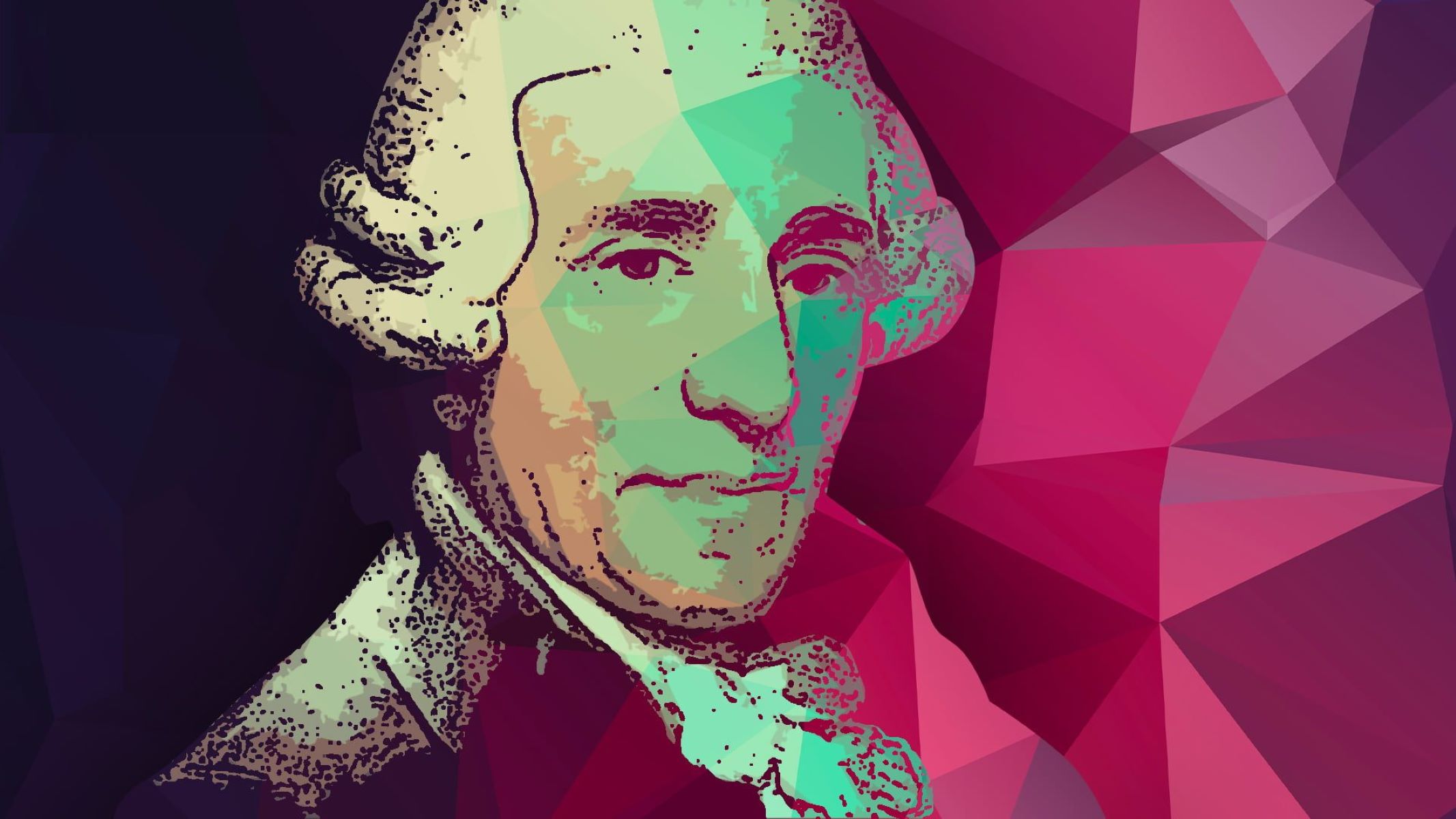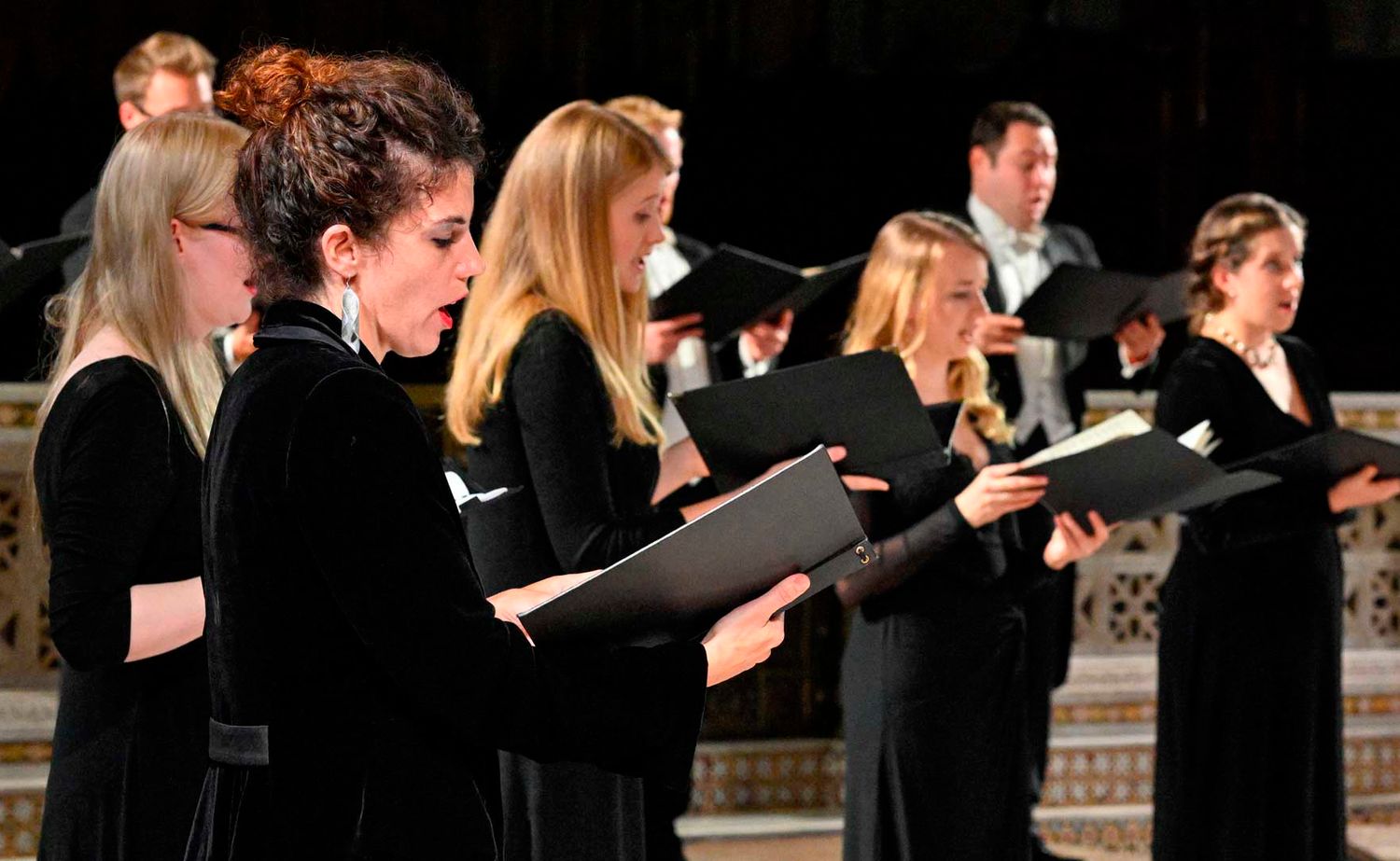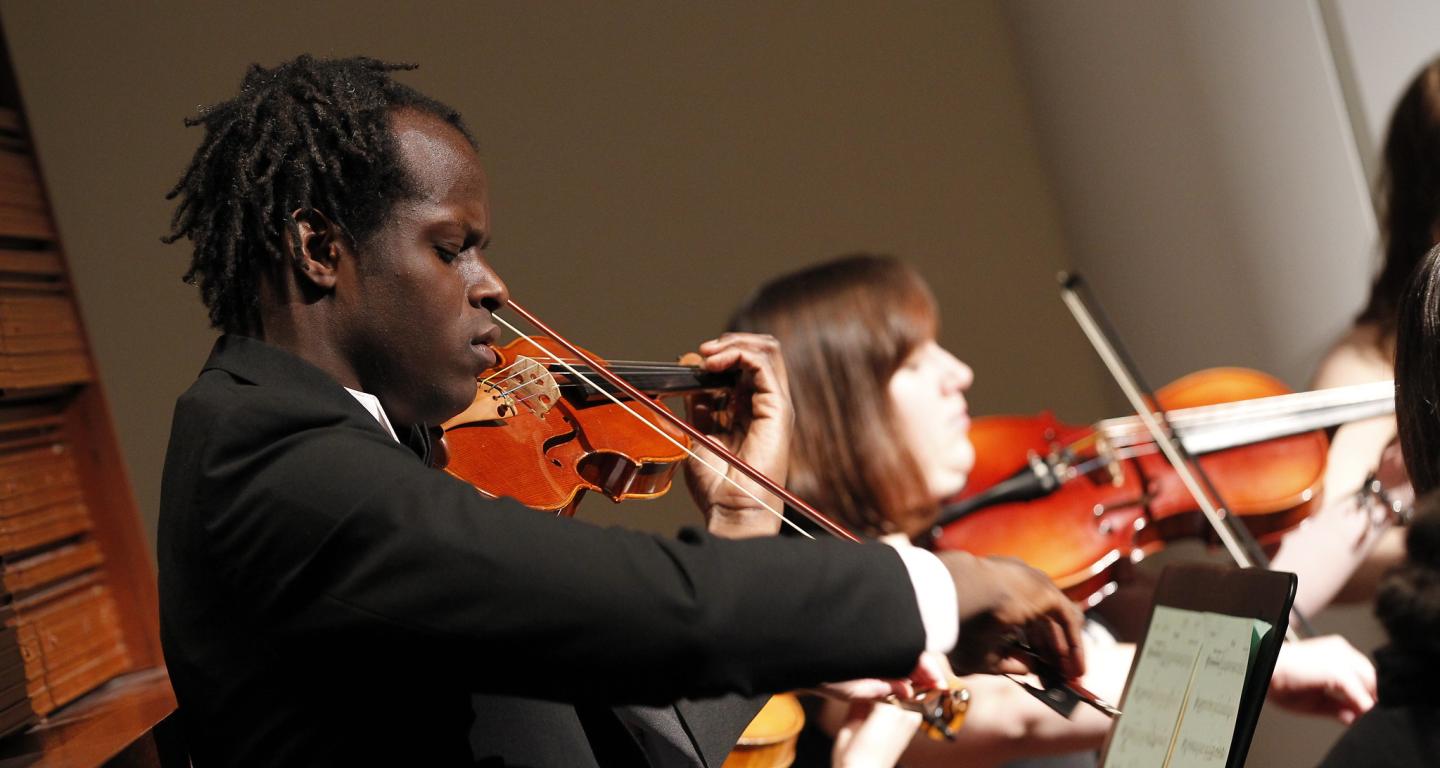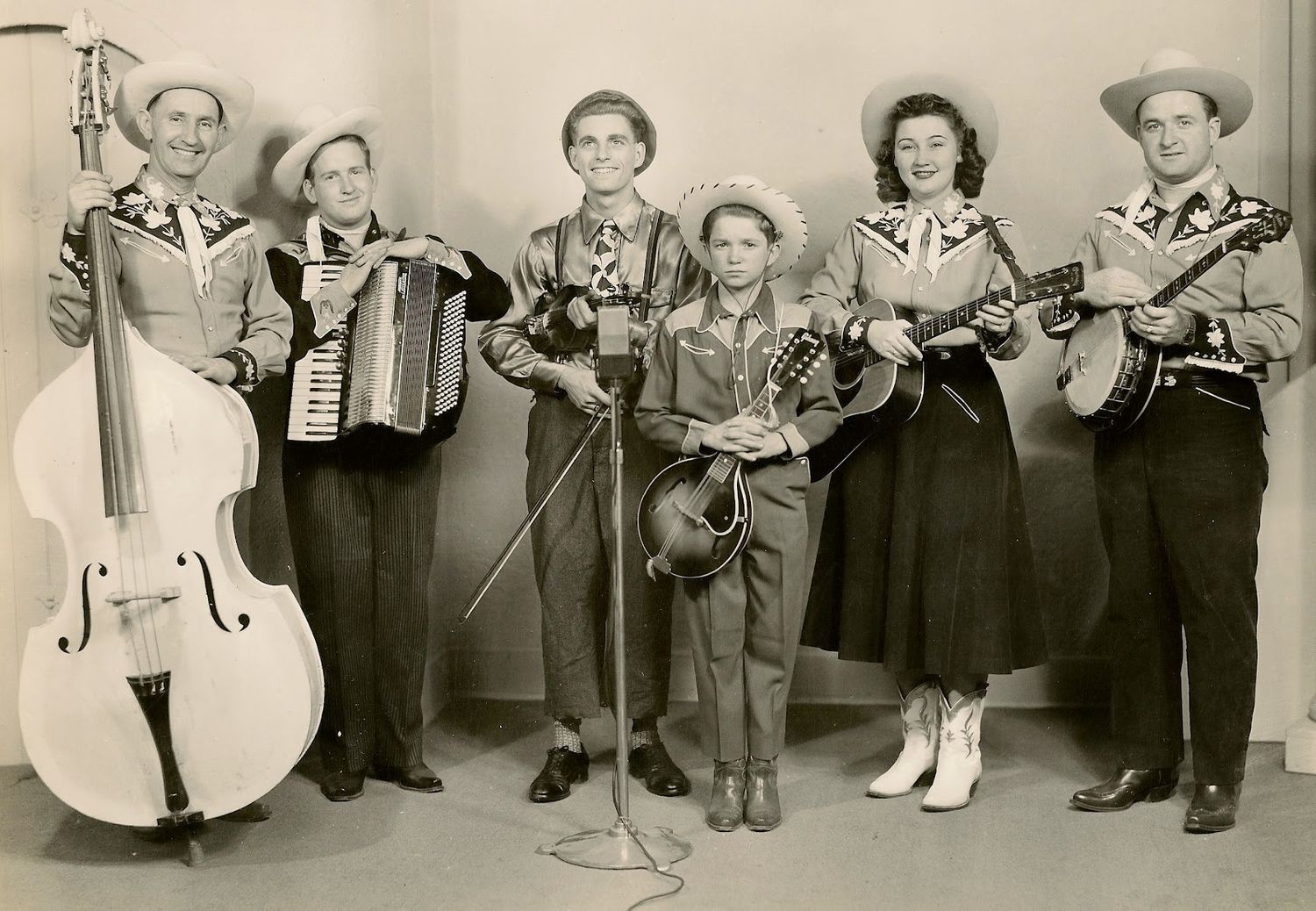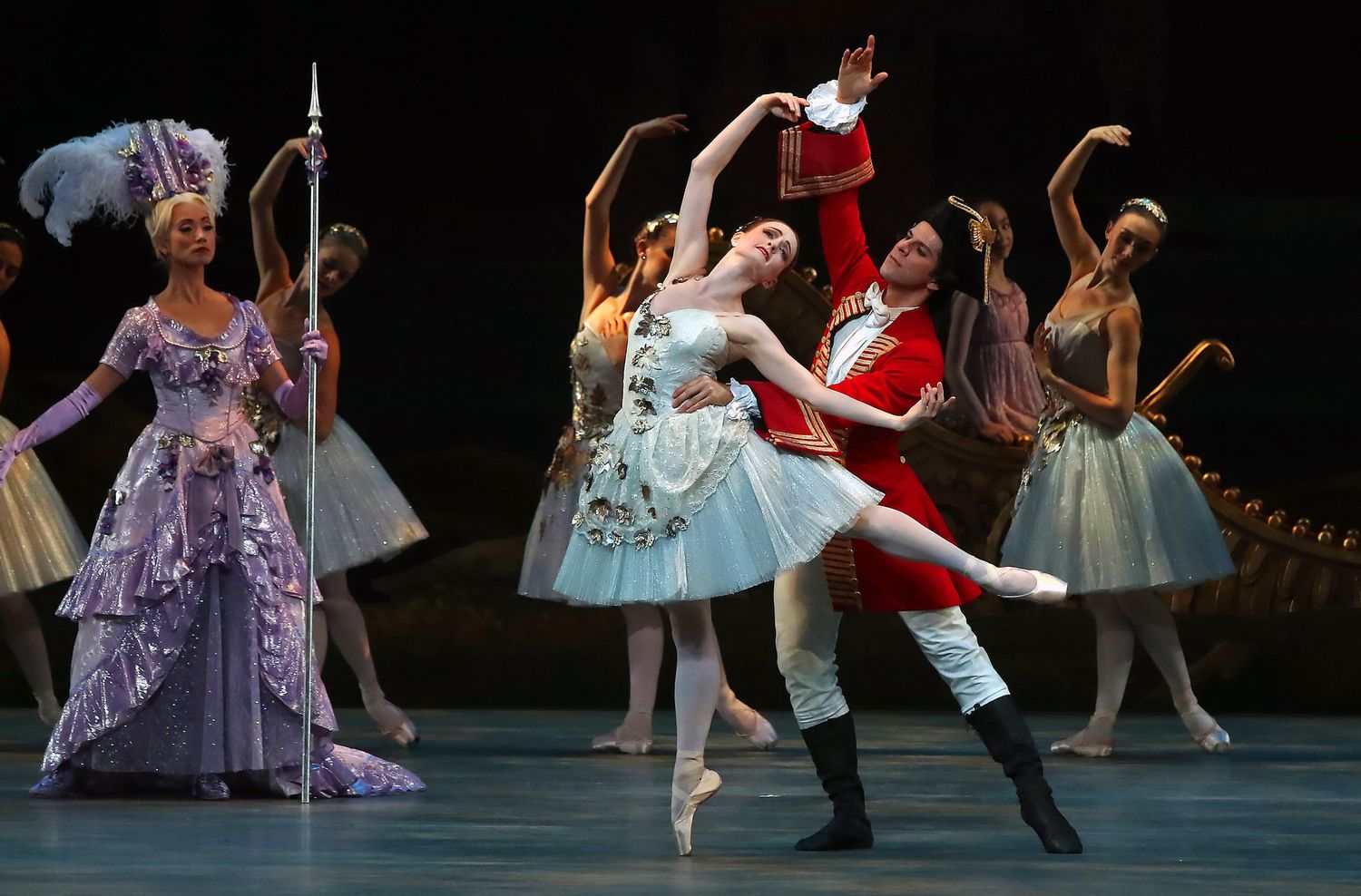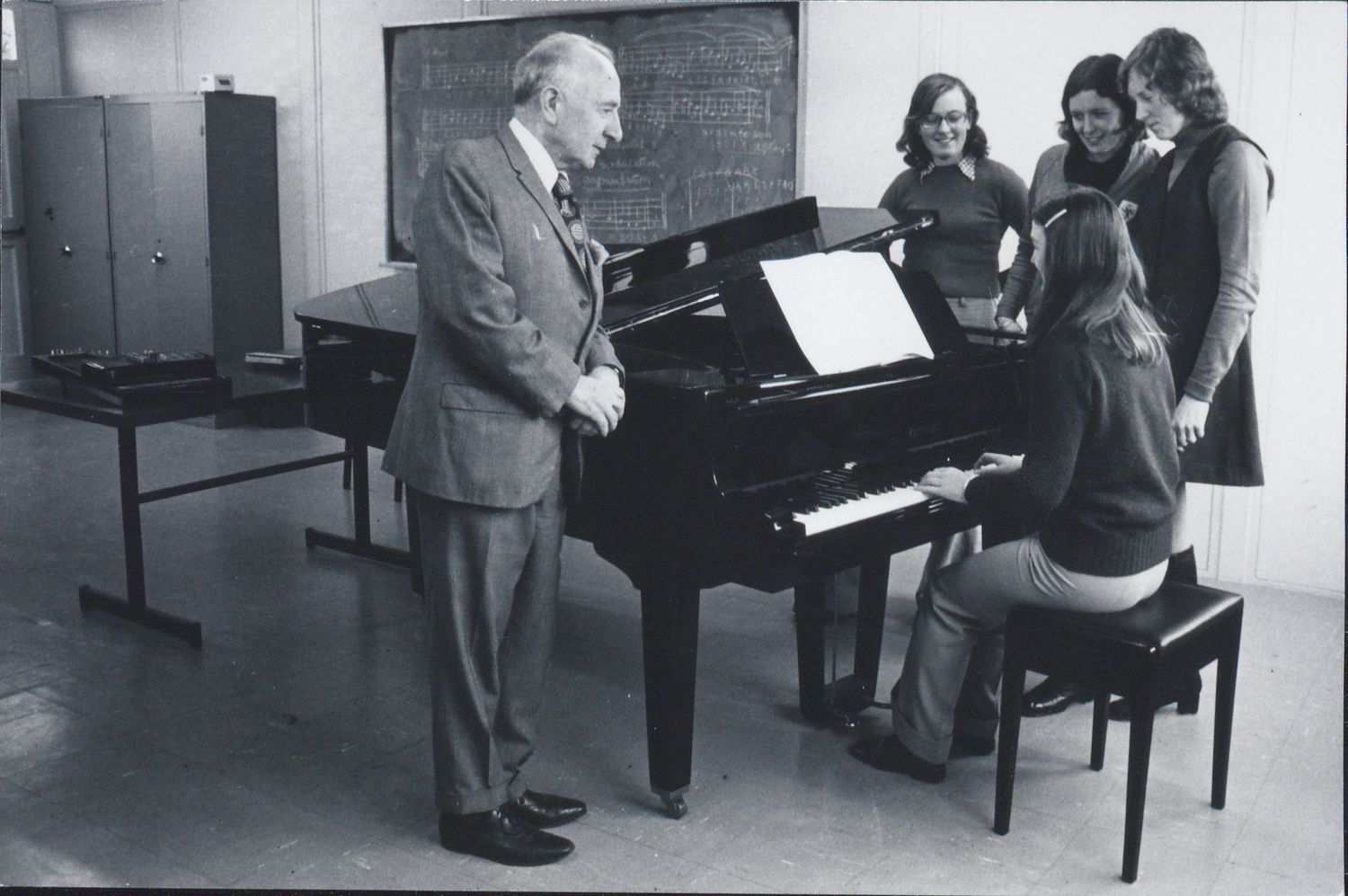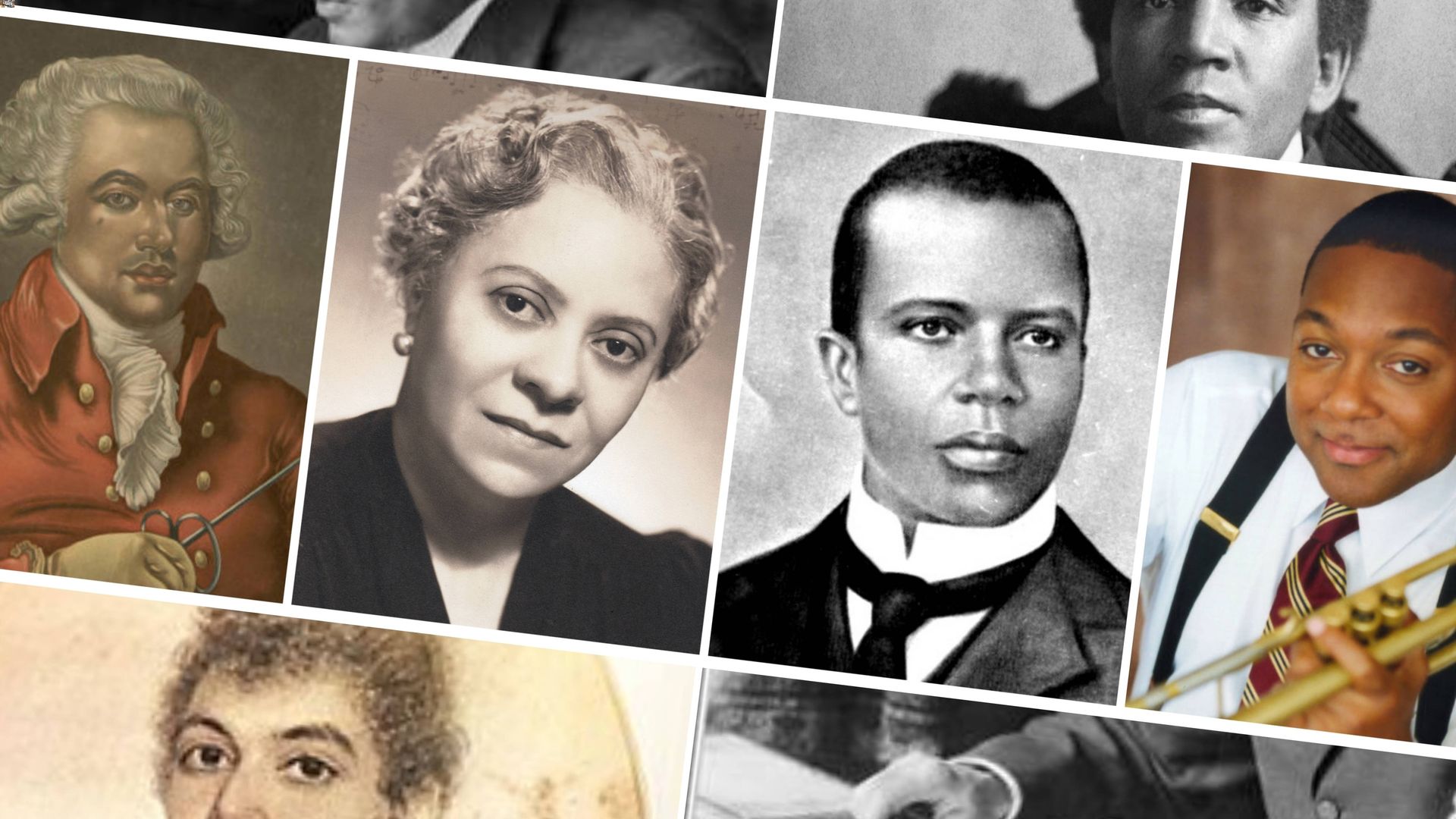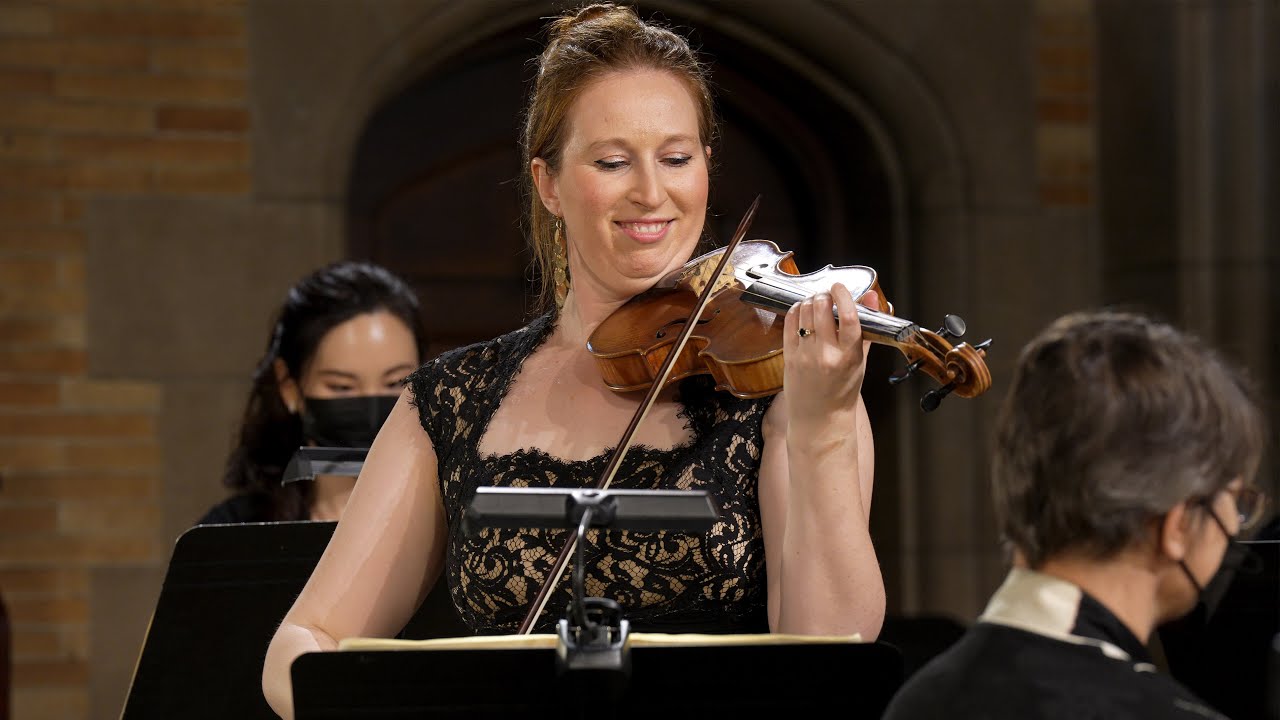Home>Events & Info>Music History>Why Was Ninth Symphony Changed Music History
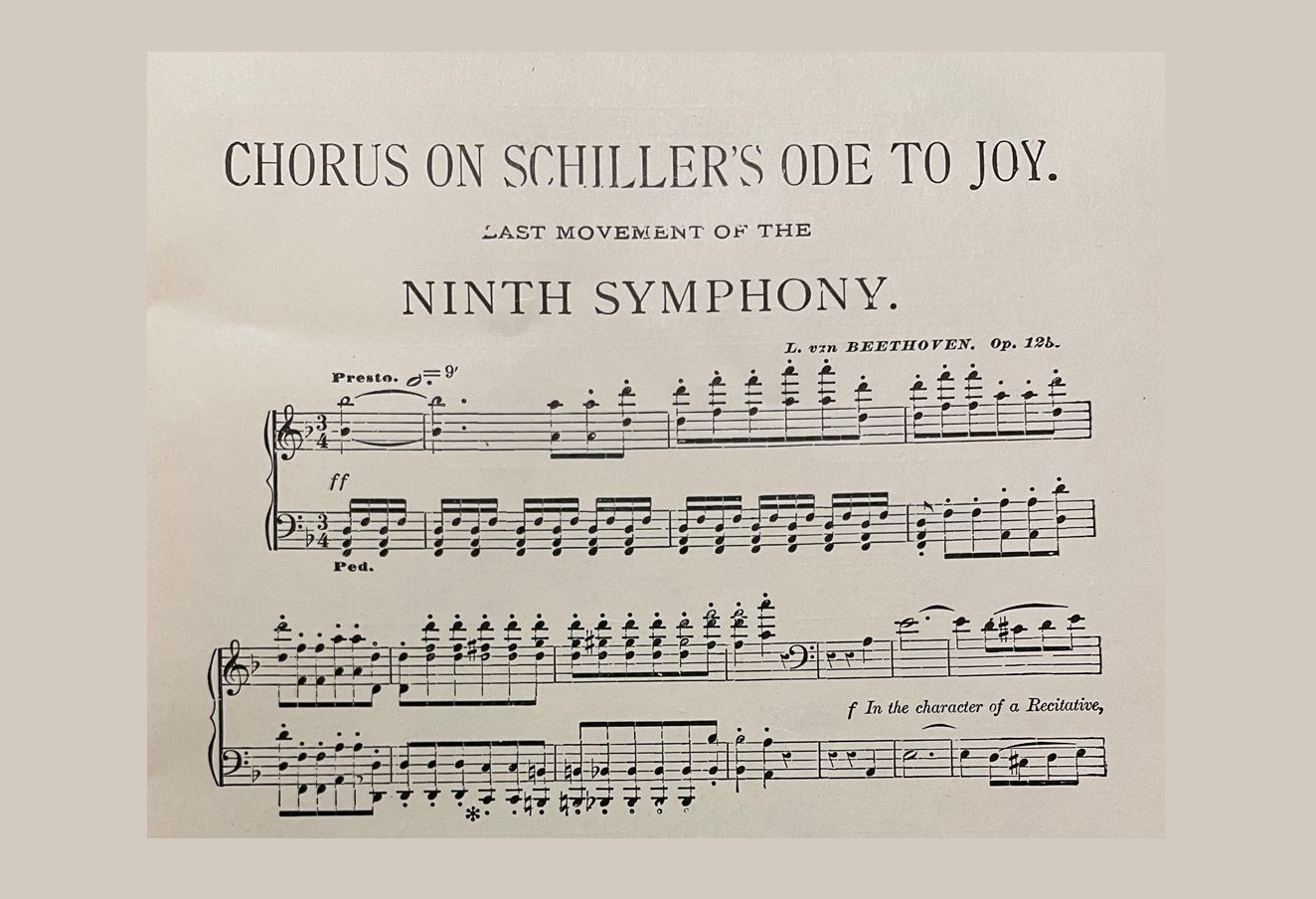

Music History
Why Was Ninth Symphony Changed Music History
Published: December 28, 2023
Discover how Beethoven's Ninth Symphony revolutionized the course of music history, exploring its profound impact on the world of classical compositions and its enduring legacy
(Many of the links in this article redirect to a specific reviewed product. Your purchase of these products through affiliate links helps to generate commission for AudioLover.com, at no extra cost. Learn more)
Table of Contents
Introduction
Music has the power to evoke emotions, transport us to different eras, and even redefine the course of history. While many composers have left an indelible mark on the world of music, few have had a profound impact quite like Ludwig van Beethoven. As one of the most influential figures in Western classical music, Beethoven’s compositions continue to inspire and captivate audiences to this day.
Among his vast body of work, one particular symphony stands out as a groundbreaking masterpiece that forever changed the course of music history: the Ninth Symphony. Often referred to as Beethoven’s crowning achievement, the Ninth Symphony revolutionized the symphonic form and introduced a level of innovation never seen before.
In this article, we will delve into the fascinating story behind the Ninth Symphony and explore its profound implications on music history. From Beethoven’s life and previous symphonies to the creation and structure of the Ninth Symphony, we will unravel the rich tapestry of this iconic composition and its lasting impact.
The Life and Times of Ludwig van Beethoven
Ludwig van Beethoven was born in Bonn, Germany, in 1770. He displayed exceptional musical talent from a young age and began his musical education under the tutelage of his father, Johann. Recognizing his son’s prodigious abilities, Johann sought to mold Beethoven into the next child prodigy, following in the footsteps of composers like Mozart and Haydn.
However, Beethoven’s life took a tumultuous turn when his father’s alcoholism and his mother’s early death left him responsible for his younger siblings. Despite these challenges, Beethoven’s passion for music prevailed, and he quickly gained recognition as a skilled pianist and composer.
In his early career, Beethoven drew inspiration from the Classical style of composers such as Haydn and Mozart. However, as he matured as an artist, he began to push the boundaries of music, embracing a more innovative and emotionally expressive approach.
Beethoven’s personal life was just as turbulent as his artistic journey. He wrestled with deafness throughout his life, gradually losing his hearing from his late twenties. Despite this profound setback, Beethoven continued to compose and perform, relying on his inner musical imagination to create groundbreaking works.
As the world around Beethoven experienced a wave of political and social changes, he also became an ardent supporter of the ideals of the French Revolution and the Age of Enlightenment. His music often reflected themes of heroism, freedom, and the triumph of the human spirit in the face of adversity.
Throughout his journey, Beethoven composed nine symphonies, each representing a distinct chapter in his artistic evolution. While all his symphonies were groundbreaking and influential in their own right, it was the Ninth Symphony that would become his magnum opus and elevate him to legendary status in the world of music.
Beethoven’s Previous Symphonies
Before delving into the Ninth Symphony, it is essential to understand the context and progression of Beethoven’s previous symphonies. Beethoven composed a total of eight symphonies prior to the Ninth, each showcasing his evolving style, creative genius, and desire to break free from traditional compositional conventions.
The First Symphony, composed in 1800, was a nod to Beethoven’s classical influences but exhibited hints of his innovative spirit. It featured vibrant melodies and a vibrant orchestration that hinted at the groundbreaking compositions to come.
The Second Symphony, composed in 1802, displayed a more introspective and dramatic side of Beethoven’s musical language. This symphony foreshadowed his departure from the Classical style and signaled his intent to explore new, uncharted territory.
Beethoven’s Third Symphony, famously known as the “Eroica,” marked a significant turning point in his career. Completed in 1804, it showcased a bold and revolutionary approach to symphonic composition, breaking away from classical conventions in terms of length, emotional intensity, and thematic development.
The Fourth and Fifth Symphonies, composed in 1806 and 1808 respectively, continued Beethoven’s exploration of new musical horizons. The Fourth Symphony maintained a sense of grace and elegance, while the iconic Fifth Symphony introduced the world to its unforgettable four-note motif, representing a triumph over adversity.
With the Sixth Symphony, also known as the “Pastoral,” Beethoven embraced the natural world and depicted scenes of countryside life with vivid orchestrations and evocative melodies. This symphony paved the way for a more programmatic approach to composition.
Beethoven’s Seventh Symphony, composed in 1812, was a tour de force, captivating audiences with its energetic rhythms and emotional depth. It remains one of his most beloved and frequently performed symphonies.
The Eighth Symphony, composed in 1812-1813, carries a lighter tone compared to its predecessors but nevertheless showcases Beethoven’s mastery of wit and humor. It serves as a delightful interlude before the grandiose finale of his symphonic journey.
Each of Beethoven’s earlier symphonies contributed to the evolution of his musical language and set the stage for the monumental Ninth Symphony, which would ultimately redefine the possibilities of symphonic composition and leave an indelible mark on music history.
The Creation of the Ninth Symphony
The genesis of Beethoven’s Ninth Symphony can be traced back to his early years as a composer. The idea of incorporating choral elements in a symphony had been brewing in Beethoven’s mind for quite some time. However, it was not until the early 1820s that he fully realized this ambitious vision.
Beethoven drew inspiration from Friedrich Schiller’s famous poem “Ode to Joy,” which celebrates the unity of humanity and the power of universal brotherhood. This powerful theme resonated deeply with Beethoven, reflecting his own ideals and the spirit of the times.
The composition process for the Ninth Symphony was no easy task for Beethoven. He grappled with his deteriorating hearing, which posed significant challenges as he strived to bring his musical vision to life. He relied heavily on sketches and communication notebooks to convey his musical ideas to his copyists and performers.
Beethoven worked tirelessly for over four years, tirelessly exploring new musical territories and experimenting with innovative harmonic and structural techniques. He sought to create a symphony that would transcend the boundaries of what was considered possible at the time.
The incorporation of a choir in a symphony was groundbreaking, as it had never been done on such a grand scale before. It required careful orchestration and an intricate balance between the instrumental and vocal forces. Beethoven meticulously crafted the interplay between the orchestra and the choir, creating moments of captivating dialogue and breathtaking climaxes.
Despite the challenges he faced, Beethoven’s determination and unwavering passion propelled him forward. The result was a symphony that would not only revolutionize the genre but also leave a profound impact on generations of composers and musicians to come.
The Ninth Symphony stands as Beethoven’s ultimate musical testament. It embodies his artistic vision, encapsulating the struggle and triumph of the human spirit and celebrating the power of music as a universal language.
Structure and Composition of the Ninth Symphony
The Ninth Symphony is a monumental composition, renowned for its innovative structure and bold musical choices. It breaks away from the traditional four-movement symphonic structure and introduces a choral finale that elevates the symphony to new heights.
The symphony is divided into four main movements:
- Allegro ma non troppo, un poco maestoso: This powerful and energetic opening movement sets the stage for the symphony’s grandeur. It features dramatic orchestral passages and introduces the primary themes that will be developed throughout the symphony.
- Molto vivace: The second movement is a scherzo, characterized by its rhythmic drive and playful melodies. It showcases Beethoven’s mastery of rhythmic intricacies and is filled with vibrant and contrasting musical ideas.
- Adagio molto e cantabile: The third movement offers a contrasting mood, with its slow and lyrical melodies. It allows for moments of introspection and emotional depth, providing a respite from the energy and intensity of the previous movements.
- Presto – Allegro assai: The final movement is where the symphony reaches its pinnacle. It seamlessly fuses orchestral music and choir, unleashing the iconic “Ode to Joy” that has resonated with audiences for centuries. This powerful and triumphant finale leaves a lasting impact, celebrating the beauty and unity of humanity.
Beethoven’s composition in the Ninth Symphony showcases his innovative spirit through various musical elements. He employs unconventional harmonic progressions, bold modulations, and daring use of dissonance to create tension and release throughout the symphony. The orchestration is rich and dynamic, with Beethoven pushing the limits of the instruments to create unique textures and effects.
Furthermore, Beethoven’s Ninth Symphony breaks new ground by seamlessly integrating vocal elements into the symphonic landscape. The choir enters in the final movement, adding an ethereal quality that elevates the emotional impact of the music. The choir’s powerful rendition of Schiller’s “Ode to Joy” becomes a transcendent and unifying experience, heightening the symphony’s universal message.
With its complex musical structure and innovative compositional techniques, Beethoven’s Ninth Symphony redefined the possibilities of symphonic composition. It remains a testament to Beethoven’s genius and his ability to push the boundaries of what was considered conventional during his time.
Debuts and Initial Reception
The debut of Beethoven’s Ninth Symphony on May 7, 1824, at the Theater am Kärntnertor in Vienna was a monumental event in the history of music. The performance was conducted by Beethoven himself, although due to his hearing loss, he relied on a co-conductor to keep the musicians in sync.
The premiere of the Ninth Symphony was a sensation, attracting a large and enthusiastic audience eager to witness Beethoven’s latest masterpiece. The symphony’s bold and unconventional structure, combined with its powerful emotional impact, left a lasting impression on those in attendance.
However, the reception of the Ninth Symphony was not without its critics. Some listeners found the symphony’s length and unconventional approach daunting, while others struggled to fully understand and appreciate the depth of Beethoven’s musical language. Nevertheless, there were many who recognized the groundbreaking nature of the symphony and the profound emotions it evoked.
Over time, the Ninth Symphony gained recognition as a groundbreaking and influential work of art. Its impact extended beyond Vienna, and performances of the symphony spread throughout Europe. Beethoven’s Ninth Symphony became a symbol of artistic innovation and a testament to the power of music to transcend boundaries.
The Ninth Symphony’s initial reception laid the foundation for its enduring legacy. It has since become one of the most celebrated and frequently performed symphonies in the classical repertoire. The universal themes of unity and brotherhood that pervade the symphony continue to resonate with audiences, ensuring its continued popularity and relevance.
The Ninth Symphony’s Impact on Music History
The Ninth Symphony stands as a monumental milestone in music history, leaving an indelible impact on composers, musicians, and audiences alike. Its revolutionary structure, innovative use of choir in a symphony, and profound emotional depth have shaped the trajectory of Western classical music.
First and foremost, the Ninth Symphony paved the way for the future of symphonic composition. Beethoven shattered the boundaries of the traditional symphonic form, opening doors for composers to explore new possibilities in structure, instrumentation, and thematic development. The inclusion of a choir in a symphony became a powerful artistic statement, inspiring generations of composers to experiment with vocal and orchestral forces in their works.
The symphony’s “Ode to Joy” finale has become one of the most iconic and recognizable musical passages in history. Its powerful message of unity and universal brotherhood resonates with people from all walks of life. The Ninth Symphony has served as a source of hope, inspiration, and solace for generations, transcending cultural and linguistic barriers.
Beethoven’s Ninth Symphony also had a significant influence on Romantic-era composers who followed in his footsteps. Its emotional intensity, exploration of the human condition, and use of music to convey a narrative or philosophical message set a precedent for the Romantic movement. Composers such as Brahms, Mahler, and Wagner were deeply inspired by the Ninth Symphony and incorporated its spirit into their own works.
Furthermore, the Ninth Symphony’s impact extends beyond the realm of classical music. Elements from the symphony have been integrated into popular culture, with its melodies being used in films, advertisements, and even as an anthem for various causes. The symphony’s enduring popularity has helped bridge the gap between classical and mainstream audiences, exposing a wider audience to the beauty and power of orchestral music.
Perhaps most importantly, the Ninth Symphony serves as a testament to the transformative power of music. Beethoven, despite his own personal struggles and deafness, created a work of art that continues to inspire and move people to this day. It stands as a symbol of the human spirit’s ability to triumph over adversity and a reminder of the intrinsic connection between music and our shared humanity.
The Ninth Symphony’s impact on music history cannot be overstated. It challenged boundaries, inspired future generations of composers, and continues to captivate audiences with its timeless beauty and profound message. Its legacy will forever be woven into the fabric of music history, reminding us of the enduring power of musical expression.
Influence on Future Composers
The influence of Beethoven’s Ninth Symphony on future composers cannot be overstated. Its bold innovations and emotional depth set a new standard for symphonic composition, inspiring generations of musicians to explore new artistic territories and push the boundaries of their craft.
One of the most direct manifestations of the Ninth Symphony’s influence can be seen in the works of Romantic-era composers. Beethoven’s use of music to convey deep emotional states and his incorporation of choral elements deeply influenced composers such as Johannes Brahms and Gustav Mahler. Brahms, for example, felt the weight of Beethoven’s legacy when composing his own symphonies and struggled to break free from the shadow of Beethoven’s achievements.
Furthermore, the Ninth Symphony’s impact extended beyond the realm of symphonic music. The fusion of choir and orchestra in the symphony inspired opera composers such as Richard Wagner. Wagner saw in Beethoven’s Ninth Symphony a vision of Gesamtkunstwerk, or the total artwork, where different art forms merge seamlessly to create a unified experience. This influenced his own vision of opera as a gesamtkunstwerk, as seen in his epic works like “The Ring of the Nibelung.”
Even in the realm of popular music, the influence of Beethoven’s Ninth Symphony can be felt. The symphony’s strong melodies and themes have been used and referenced in various genres, from pop to rock, showcasing its universal appeal and enduring legacy. Its famous “Ode to Joy” theme, in particular, has been adapted and reimagined by countless artists, further spreading its influence throughout different musical landscapes.
Beyond specific composers, the Ninth Symphony’s lasting impact lies in its ability to inspire and touch the hearts of listeners. Its profound emotional depth and universal themes have resonated with audiences for centuries, transcending cultural and temporal barriers. The symphony’s message of unity and the power of music to elevate the human spirit continues to serve as a source of inspiration for composers and musicians of all genres.
The Ninth Symphony’s influence on future composers can also be observed in the exploration of new forms and structures. Composers began to experiment with unconventional symphonic structures, incorporating elements beyond the traditional four-movement format. Beethoven’s willingness to break away from established norms encouraged composers to challenge conventions and explore their unique musical visions.
Overall, the Ninth Symphony’s influence on future composers is profound. It elevated the symphony to new heights, inspired the incorporation of vocal and choral elements, and sparked a wave of creativity and innovation in symphonic and operatic compositions. Its enduring popularity and relevance continue to inspire musicians, ensuring that Beethoven’s musical legacy lives on in the works of future generations.
Conclusion
Ludwig van Beethoven’s Ninth Symphony is a masterpiece that has left an indelible mark on the world of music. From its groundbreaking structure to its profound emotional depth, this symphony revolutionized the symphonic form and inspired countless composers in its wake.
Beethoven’s life and experiences, coupled with his relentless pursuit of artistic expression, culminated in the creation of the Ninth Symphony. Its powerful message of unity, portrayed through the incorporation of a choir and the iconic “Ode to Joy” finale, continues to resonate with audiences across the globe.
The Ninth Symphony not only transformed the landscape of symphonic composition but also had a profound influence on future composers. Its innovative structure, bold use of orchestration, and exploration of complex emotions opened doors for composers to explore new territories and push the boundaries of their craft.
Beethoven’s Ninth Symphony remains a symbol of the enduring power of music. Its melodies and themes have transcended time and genre, permeating popular culture and captivating audiences from all walks of life.
In conclusion, the Ninth Symphony stands as a testament to Beethoven’s genius and his ability to transcend the limitations of his own personal struggles. Its impact on music history cannot be overstated, as it continues to inspire and move listeners to this day. Beethoven’s Ninth Symphony serves as a timeless reminder of the transformative power of music and the ability of the human spirit to triumph over adversity. Truly, it is a testament to the everlasting legacy of one of the greatest composers in history.


